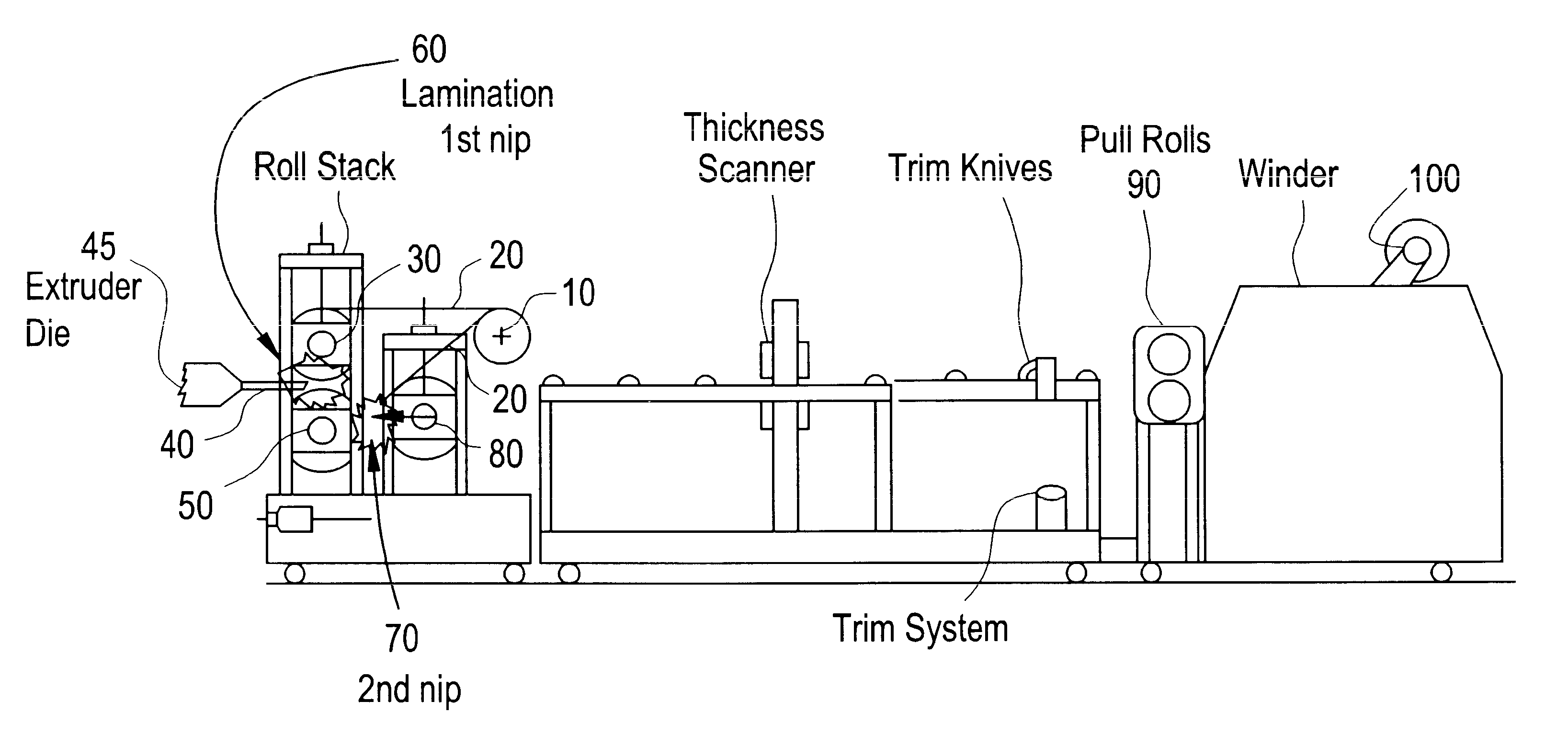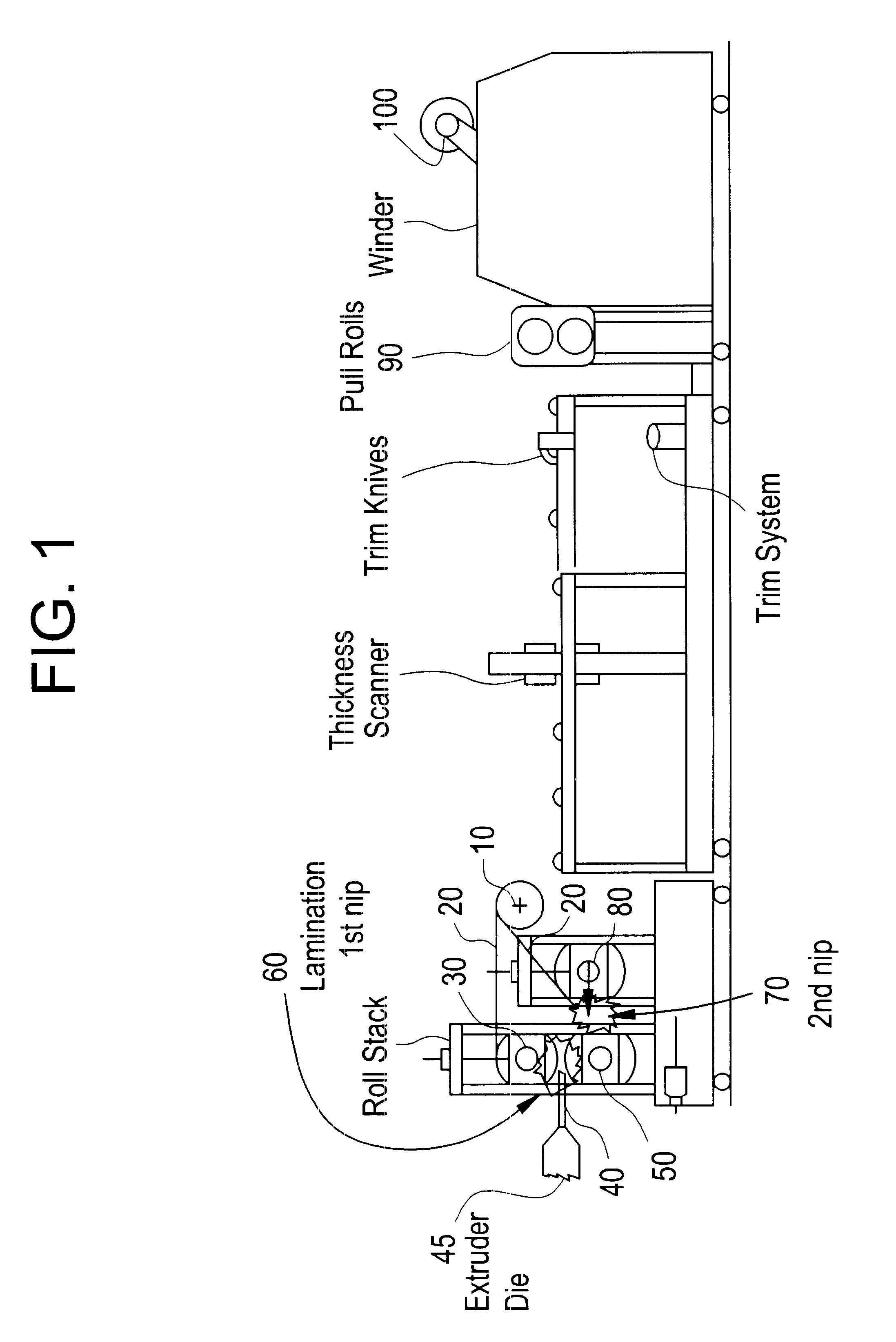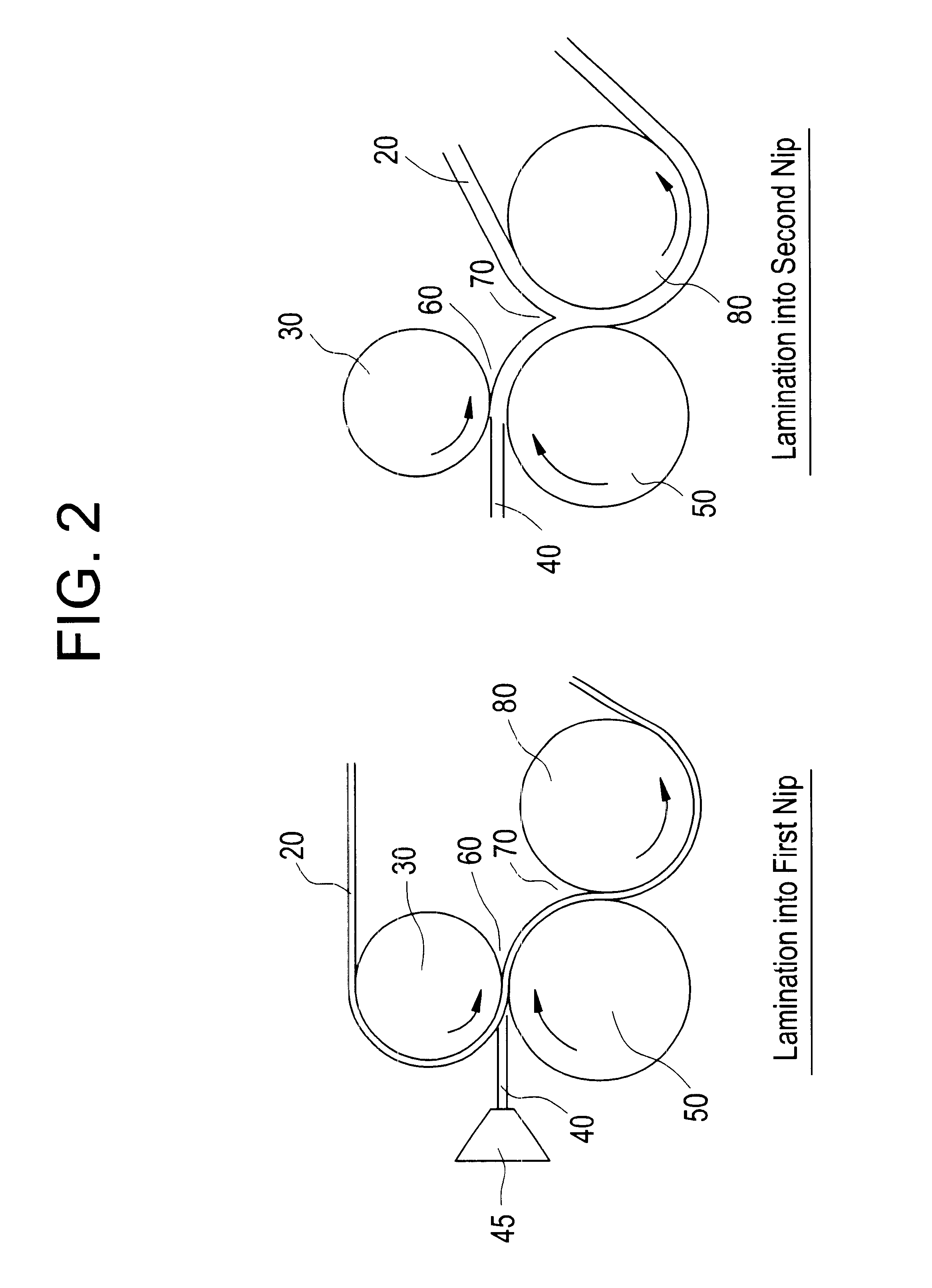Insert mold decorating film for thermoplastic resin
- Summary
- Abstract
- Description
- Claims
- Application Information
AI Technical Summary
Benefits of technology
Problems solved by technology
Method used
Image
Examples
example 1
As shown in Example 1, only the K-1 material which is laminated in the 1st nip will meet the design criteria i.e. pass scribe adhesion test, % haze of less than 2.5, formability, and birefringence of less than 20 nm. A low birefringence film is required for transparent 3-dimensional thermoformed (vacuum or pressure forming) Insert Mold Decorated applications that require tight graphics registration. This data would indicate the 1.5 mil OPET liner used in material K-1 is preferred. The oriented polyester liner film enhances low surface roughness / high gloss of the laminate produced. As the surface roughness decreases the gloss increases.
The LT, YI, and haze were measured using a Gardner colorimeter in the transmission mode.
example 2
Lamination Process Performance
As shown in Example 2, if the PC film is nipped in multiple locations, the birefringence will increase. The process must operate with the 1st nip closed. Closing the 2nd nip is optional. The lamination film maybe introduced into the 1st or 2nd nip; however, the 1st nip is preferred in order to minimize the birefringence.
example 3
Lamination of Film to Extruded PC Film.
The laminate comprising a 2 mil PVF layer is bonded to a 10 mil PC layer was manufactured under the conditions illustrated.
These conditions as shown in Example 3, will produce a laminate with properties as shown in Example 1 (K-1 laminated into 1st nip).
PUM
| Property | Measurement | Unit |
|---|---|---|
| Percent by mass | aaaaa | aaaaa |
| Percent by mass | aaaaa | aaaaa |
| Percent by mass | aaaaa | aaaaa |
Abstract
Description
Claims
Application Information
 Login to View More
Login to View More - R&D
- Intellectual Property
- Life Sciences
- Materials
- Tech Scout
- Unparalleled Data Quality
- Higher Quality Content
- 60% Fewer Hallucinations
Browse by: Latest US Patents, China's latest patents, Technical Efficacy Thesaurus, Application Domain, Technology Topic, Popular Technical Reports.
© 2025 PatSnap. All rights reserved.Legal|Privacy policy|Modern Slavery Act Transparency Statement|Sitemap|About US| Contact US: help@patsnap.com



